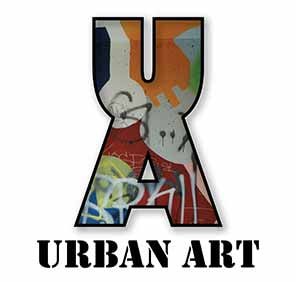This is part one of five blogs on Expressive Lines, Shapes, and Forms. The additional blogs are Rule of Odds, Understanding Expressive Lines, Pulling it Together: Circles, and Pulling it Together, Expressive Lines, Shapes, and Forms.
Terms you should understand
- Major Flow When discussing the Flow of a design, painting, sculpture, etc., we are talking about the major direction dominating the all-over design. For example, the all-over Flow in a design may be diagonal (or vertical or horizontal)
-
Line Quality refers to how a line is drawn, i.e., smooth, soft, broken, thick, thin, etc.
Why is the concept of Expressive Lines, Shapes, and Forms important?
Most of us have worked with triangles, squares, and circles since we were kids, making it easy to take shapes for granted. However, consider this: on an unconscious level, forms, shapes, and lines express different feelings and energy levels to the viewer. Understanding how shapes, forms, and lines interact will arm you with additional compositional elements to help you create a specific mood/feeling in your designs.
When conceptualizing a design, consider the words your clients ask to have embodied in the final design. Think about the energy level associated with the selected words. Once you establish the energy level, apply the following knowledge about shapes/forms to your design.
This concept is equally important to fine artists. Although the fine artist is not bound, like a commercial artist, to directly express a concept or feeling, many fine artists work symbolically, making this concept necessary to understand.
Forms & Shapes We see shapes as flat and 2-dimensional (squares, triangles, etc.). Forms are a shape that appears 3-dimensional (cubes, cones, etc.).
NOTE: Throughout this blog, I will use the term shape, but the information applies to both shapes and forms.
Geometric shapes & forms are precise and can imply a man-made quality to the viewer.
Man-made means not resulting from natural processes, artificial, manufactured, plastic, or synthetic. The following shapes/forms are geometric.
Circles can imply passiveness and stability. Some consider it symbolic of the feminine. Unlike a triangle or square, the circle has no angle, so it feeds its energy back into itself. The energy level of the circle is the lowest of the four shapes we will discuss.

The circle has low-energy
Triangles create movement through their three corners. This movement is pushed-pulled through the three corners. The corners can force the viewer’s eye towards or away from other objects on the picture plane. The energy level of the triangle is the highest of the four shapes we will discuss. The Rule of Odds (see Rule of Odds post) applies to the triangle.

Triangles have the highest energy.
Squares are stable shapes that gather strength from their absolute symmetry. The symmetry comes from each side of the square having the same size on all four sides. The energy level is medium-low when viewed as a square, making it slightly more energetic than a circle.

Square
It becomes more energetic when the square is placed on its side (looking like a symmetrical diamond).

The energy level of the square changes when turned on its' side.
In the diamond orientation, the square acts like a triangle, with the corners creating push-pull energy. This origination is medium energy. Its energy level is not as high as a triangle due to the even number of corners (see Rule of Odds).

In the diamond orientation, this shape has more energy.
Rectangles are almost as stable as squares because they have two sets of sides of the same length size. Like the square, the energy level of the rectangle changes depending on its orientation.

Horizontal rectangles add tranquility to compositions due to their restful attitude. The energy level is medium-low in this orientation.

The horizontal rectangle has medium-low energy.
Vertical rectangles add energy to compositions due to their upright position. This is an example of medium energy for the rectangle. Think of picket fences!

The vertical rectangle has medium energy.
Diagonal rectangles have the highest energy of the three orientations and are medium-high. Whenever anything is placed on a diagonal flow, it has more energy.

The diagonal rectangle has medium-high energy.
Organic shapes and forms, and the book Point and Line to Plane.
Most of this information on shapes and forms comes from the book Point and Line to Plane by Russian artist Wassily Kandinsky, written in 1926.
Due to current technology, we understand that organic objects can have a very man-made look. The ability to take photos with a microscope didn’t make significant advancements until 1933, seven years after the book was written.

Photos of algae
We can cite examples of things in nature that look very man-made, such as photos of algae, but for this discussion, we will follow the description of organic shapes and forms described by Kandinsky.

Organic shapes as described by Kandinsky.
Organic shapes and forms are often irregular and spontaneous. Their twists and curves don’t conform to a set structure as you would expect in symmetrical, geometrical shapes and forms. Forms and shapes found in nature are often organic. The circle is considered both geometric and organic.
Credits: Point and Line to Plane, by Wassily Kandinsky

